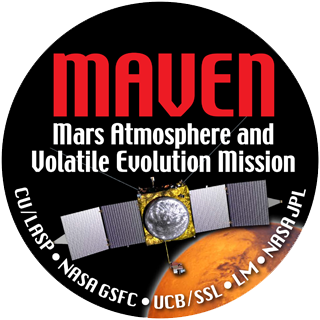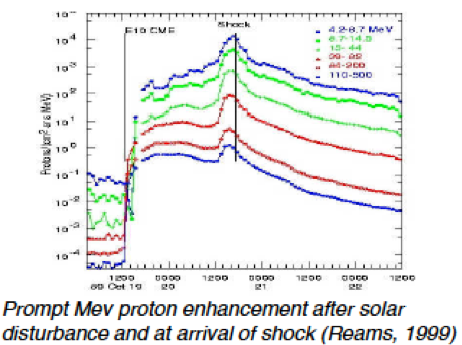
The Solar Energetic Particle (SEP) instrument consists of two double-ended telescopes designed to separate ions and electrons. One telescope is mounted on the spacecraft aligned with the average magnetic field direction and the other sensor is oriented roughly at 90° to determine isotropy. The detection range for protons and heavier ions is ~25 keV to 12 MeV and for electrons from ~25 keV to 1 MeV.
Measurement Objectives SEP characterizes solar particles in an energy range that affects the upper atmosphere and ionospheric processes (~120-200 km). It measures the energy spectrum and angular distribution of solar energetic electrons (2 keV-1 MeV) and ions (25 keV-12 MeV) to determine SEP energy input as a function of altitude. In addition, the instrument is designed to detect the highest energy pickup ions (>30 to100s of keV) and sustain a time resolution sufficient to capture major SEP events (<1 hour).
Useful Mission Documents
Archive Bundle Contents
Selecting and Requesting Data - The following index can be downloaded and edited to contain data that conform to your needs. This allows you to understand the scope of the data set and to tailor your request for specific products.
Citing Data Sets for Publications (to be developed)
Other Useful Products for Interpreting the Data
Measurement Objectives SEP characterizes solar particles in an energy range that affects the upper atmosphere and ionospheric processes (~120-200 km). It measures the energy spectrum and angular distribution of solar energetic electrons (2 keV-1 MeV) and ions (25 keV-12 MeV) to determine SEP energy input as a function of altitude. In addition, the instrument is designed to detect the highest energy pickup ions (>30 to100s of keV) and sustain a time resolution sufficient to capture major SEP events (<1 hour).
Useful Mission Documents
Mission Description
Spacecraft Description
Software Interface Specification (SIS) - Description of the instrument and data structures
Calibration Document - Description of calibration methods
Spacecraft Description
Software Interface Specification (SIS) - Description of the instrument and data structures
Calibration Document - Description of calibration methods
Archive Bundle Contents
Documentation - Directory containing the document collection, which includes references to refereed journals using this instrument, and information about calibration and explanation of data structures.
Raw Data - Directory containing the raw data files
Calibrated Data - Directory containing the calibrated data files
Derived Data - Directory containing advanced products
Raw Data - Directory containing the raw data files
Calibrated Data - Directory containing the calibrated data files
Derived Data - Directory containing advanced products
Selecting and Requesting Data - The following index can be downloaded and edited to contain data that conform to your needs. This allows you to understand the scope of the data set and to tailor your request for specific products.
As-flown Index - List of actual observations in order of acquisition
Requesting Data You will need to upload your edited file
Requesting Data You will need to upload your edited file
Citing Data Sets for Publications (to be developed)
Other Useful Products for Interpreting the Data
References - Publications by team members
Other Potential Relevant Data - Data that may be relevant from missions other than MAVEN
SPICE - Archived MAVEN SPICE ancillary data providing observational geometry (positions, orientations, instrument pointing, time conversions, etc.) are available from the PDS NAIF Node.
Other Potential Relevant Data - Data that may be relevant from missions other than MAVEN
SPICE - Archived MAVEN SPICE ancillary data providing observational geometry (positions, orientations, instrument pointing, time conversions, etc.) are available from the PDS NAIF Node.
 PDS: The Planetary Atmospheres Node
PDS: The Planetary Atmospheres Node



